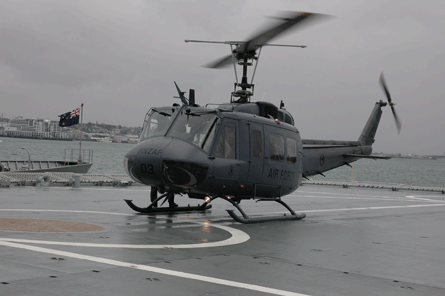A court of inquiry report into a fatal Royal New Zealand Air Force Bell UH-1H Iroquois crash on 25 April 2010 has attributed blame both to its pilots and the military's protocols and oversight.
Three crew members were killed when aircraft NZ3806 crashed at the head of a valley after encountering low cloud while being flown in formation with two other UH-1s to conduct ANZAC Day flypasts in the Wellington region. A fourth person survived with serious injuries.
The formation had departed Ohakea air base at 05:13, avoiding forecast low cloud by heading west before following the coastline south. Pitch black conditions and the absence of any moonlight made their night vision goggles almost ineffective. After reaching Pukerua Bay 35min later, the aircraft prepared to turn back towards the north, but immediately entered low cloud.
 |
|---|
© Peter Clark |
The formation immediately lost cohesion and mutual awareness, with each crew initiating its own escape plan. The inquiry found that the second aircraft in the formation failed to begin climbing immediately after entering instrument meteorological conditions, and that its radar altimeter alarm had been incorrectly set to 50ft (15m), instead of the required 200ft. The aircraft crashed approximately 30s later, with the report saying it had probably been flying at around 70-90kt (130-166km/h) and in a controlled climb at the time of impact.
The report criticised the New Zealand Defence Force for failing to ensure that crews were fully qualified and competent, and said air force processes were not effective at mitigating the risks associated with night-vision flights. It also identified a culture of "rule breaking" among members of the service's UH-1-equipped 3 Sqn, which it said audits had been too slow to address.
Eight of the report's 10 recommendations have been fully accepted and two partially accepted by the air force, while significant organisational changes have already been made following a post-crash review of the defence force's command and control of flying operations. The latter have improved the supervision, airworthiness and flight-safety of air force activities, the service said.
Source: Flight International























